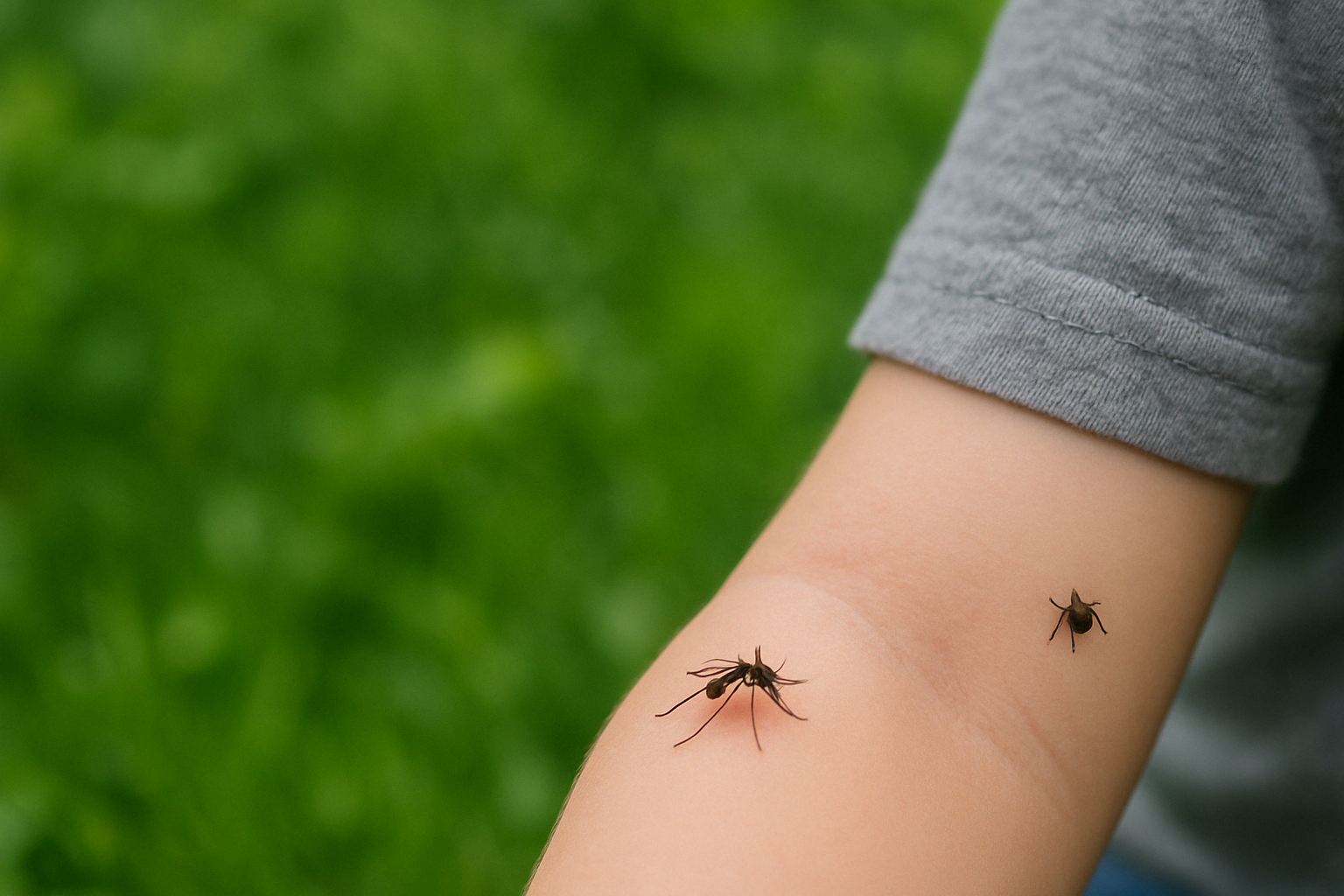Bug Bite Season is Here: What Parents Should Know About Ticks and Mosquitoes
April 19, 2025

As the weather warms up and families spend more time outside, it’s important to start thinking about bug bite prevention—especially when it comes to ticks and mosquitoes. These tiny pests are more than just an itchy nuisance; they can carry diseases that affect children’s health.
Here’s a quick guide to help keep your child protected while enjoying the great outdoors this season.
Ticks: Small Bugs, Big Concerns
Ticks tend to live in grassy, wooded, or brushy areas, and they’re especially active in spring and summer. They can carry diseases like Lyme disease, which can cause serious symptoms if left untreated.
How to protect your child from ticks:
- Use a child-safe insect repellent that contains DEET or picaridin.
- Dress children in long pants and sleeves if they’re hiking or playing in tall grass.
- Encourage them to stay on trails and avoid walking through dense vegetation.
- After outdoor play, do a full-body tick check—pay special attention to behind the ears, underarms, waistband areas, and scalp.
If you find a tick, gently remove it with clean tweezers by pulling it straight out. Wash the area with soap and water, and keep an eye on the bite for any signs of a rash or infection. If anything looks unusual, contact your pediatrician.
Mosquitoes: More Than Just Itchy
Mosquitoes thrive in areas with standing water and tend to be most active around dawn and dusk. In some regions, they can spread viruses such as West Nile and Zika.
Here’s how to reduce mosquito bites:
- Dump out any standing water around your home (buckets, plant saucers, toys, etc.).
- Apply mosquito repellent before heading outside, especially if you’ll be out in the early morning or evening.
- Use screens on doors and windows to keep bugs out.
- Dress your child in lightweight long sleeves and pants when mosquitoes are heavy.
Even if the bites aren’t dangerous, they can still be uncomfortable. You can ease the itching with a cold compress, anti-itch cream, or—if needed—an antihistamine, with your doctor’s okay.
What to Do if Your Child Gets a Bug Bite
Most bug bites are harmless and go away on their own. But it’s still important to treat them properly to prevent infection and help your child feel better.
- Don’t let kids scratch too much—trim their nails to reduce skin damage.
- Watch the bite site for signs of infection: increasing redness, warmth, swelling, or pus.
- If your child develops a fever, rash, or seems unwell after a bite, it’s best to check in with your doctor.
Special Note for Babies and Toddlers
Repellents should be used carefully with younger children. For babies under two months, avoid using repellent directly. Instead, try mosquito netting over strollers or carriers, and keep them covered with lightweight clothing. Always check product labels and follow age-specific instructions.
Enjoy the Outdoors, Safely
Bug bites are a normal part of childhood—but with a little extra care, you can help prevent the more serious ones and keep your kids safe while they explore outdoors. If you have questions or notice anything unusual after a bite, our office is here to help.
Here’s to a fun and safe season ahead!uidance. Taking proactive steps now can help your child thrive throughout the spring and beyond.
At Holly Springs Pediatrics, we’re here to support your family’s health all year round. If you have any questions or concerns about your child’s skin, give us a call. We’re happy to help you find the best ways to keep your little one comfortable and healthy this season.
Holly Springs Pediatrics is committed to providing quality care to your kids at all times on a wide array of subjects. For more information or to get in contact with our office, call (919) 249-4700 to schedule an appointment.
